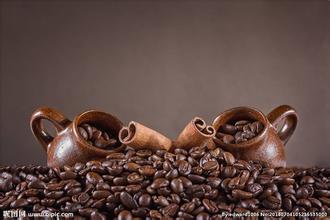Introduction to the production area of Grinding scale for Coffee planting and Flavor description treatment
Introduction to the production area of Grinding scale for Coffee planting and Flavor description treatment
Coffee trees can be divided into two main varieties: Arabica (Arabica) and Robusta (Robusta).
There are also some minor species, such as the Liberian species (Liberica) and the Alabasta species (Arabusta), but they are rare on the market.
Although Arabica and Roberta are widely cultivated, there are significant differences between them. Beans are different and tree species are not the same. Therefore, their use is also different. The world's production of Arabica beans is about 70%, while Robosta and others account for 30%.
Arabica
Arabica has a variety of tastes and acidity, high acidity, less caffeine, red color, less oil, can only grow above 800 meters above sea level, strong aroma, and a variety of different flavors, taste more pure, taste lubrication, chocolate, vanilla and nutty flavor. This kind of coffee is used in the best coffee shops in the world, and experts believe that the quality of this kind of coffee depends on the reasonable blending of bean seeds. Brazil is the largest growing country of Arabica beans, followed by Colombia and India.
Robusta
The flavor of Robusta is more bitter than that of Arabica, and its quality is much lower, so it is mostly used to make instant coffee. In general, the coffee sold in fast food restaurants mainly uses Robusta coffee beans as the material. Because it is made in Africa, most Africans drink robusta coffee. It has strong resistance to disease and high yield, accounting for less than 30% of the world's total coffee production. Robusta has low acidity, high caffeine content, brown color, thick fat and less flavor than Arabica, which can increase the taste and gelatinous taste of coffee.
Liberian coffee trees account for less than 5% of the world's output. Liberian coffee trees are suitable for planting in the lowlands, and the coffee beans produced are highly fragrant and bitter.
The second step: raw bean treatment
The treatment methods of raw coffee beans can be divided into natural sun method, water washing method, natural water washing method and honey treatment method. Different treatment methods also have an effect on the flavor of coffee.

Important Notice :
前街咖啡 FrontStreet Coffee has moved to new addredd:
FrontStreet Coffee Address: 315,Donghua East Road,GuangZhou
Tel:020 38364473
- Prev

Where is the origin of coffee? introduction to the planting environment of manors in domestic areas
Where does coffee come from? the manor planting environment in domestic areas. Coffee drinking rituals are well-known in traditional Ethiopian families. There are two or three coffee drinking times a day. It has a variety of drinking rituals or rituals. In the evening, the whole family sat on the ground around a small charcoal stove. The floor around the charcoal stove is specially cut or bought.
- Next

Introduction of taste grinding scale of varieties produced by Lim Manor in African coffee producing area
Introduction to the Grinding scale of the varieties treated in Lim Manor in African Coffee producing area Water washing: Grade-1;Grade-2 Solar: Grade-3;Grade-4;Grade-5 and Grade-1 several points to note: a) both washing and solarization, there is Gr-1, the condition is zero defect and Premium Cup. Whether it's washing or tanning, Gr-1 is the best of the boutiques or Cup of Exce.
Related
- What brand of black coffee is the most authentic and delicious? what are the characteristics of the flavor of the authentic Rose Summer Black Coffee?
- Introduction to the principle and characteristics of the correct use of mocha pot A detailed course of mocha pot brewing coffee is described in five steps.
- Which is better, decaf or regular coffee? how is decaf made?
- How much is a bag of four cat coffee?
- How about four Cat Coffee or Nestle Coffee? why is it a cheap scam?
- Which is better, Yunnan four Cats Coffee or Nestle Coffee? How about cat coffee? is it a fake scam? why is it so cheap?
- How about Cat Coffee? what grade is a hoax? which instant coffee tastes better, four Cat Coffee, Nestle Coffee or G7 coffee?
- Process flow chart of coffee making-Starbucks coffee making process what coffee tastes good at Starbucks
- The top ten best coffee beans in the world Rose summer coffee or Tanzanian coffee tastes good
- Yunnan four cat coffee is good to drink?_four cat coffee is a big brand? four cat blue mountain coffee is fake?

